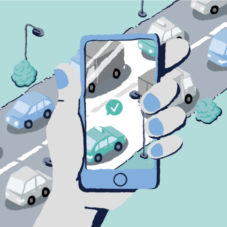“When companies seek biometric services, it shows responsibility and care,” says remote identity verification expert
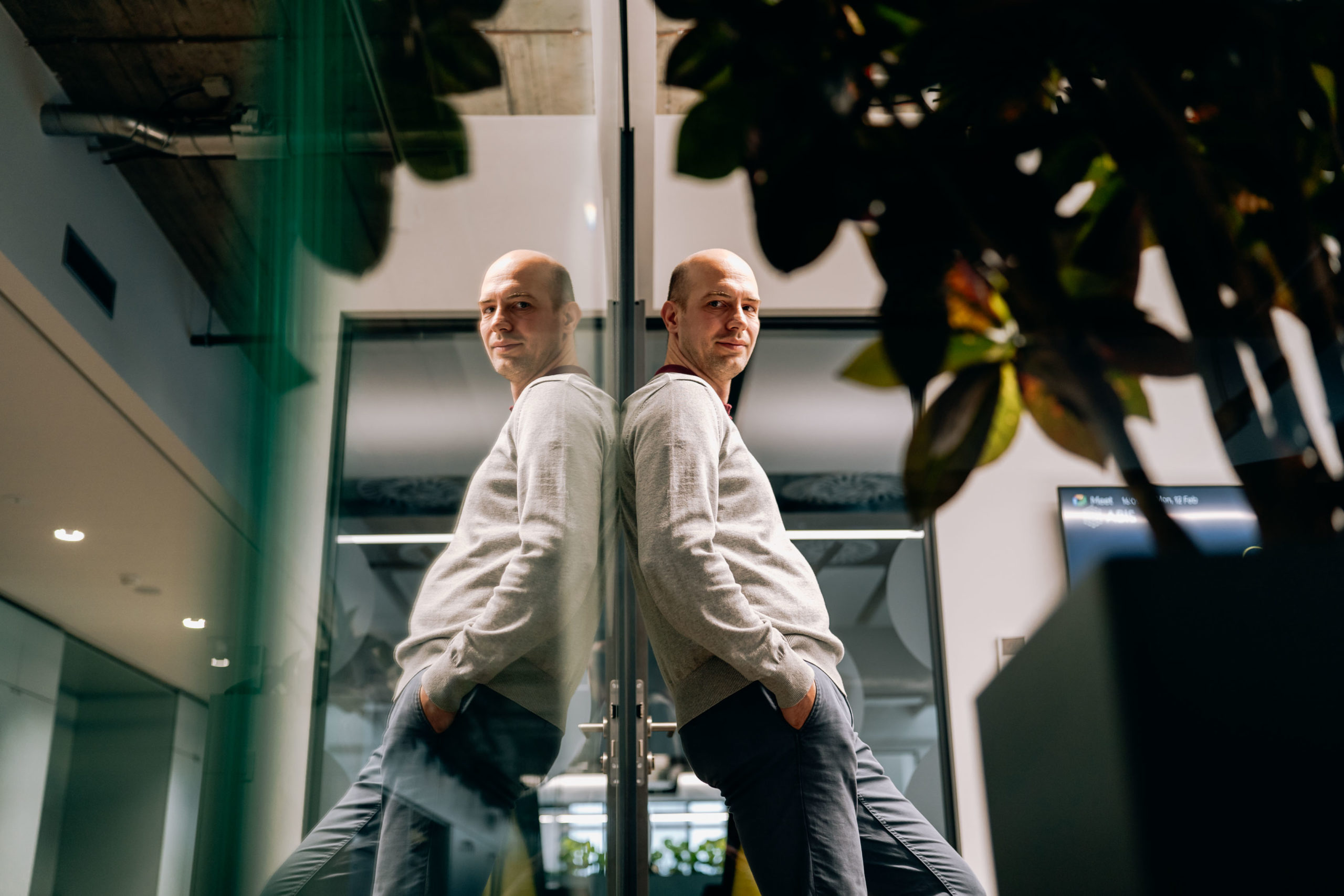

Viktor Bielko
Product Manager for the DOT at Innovatrics
The global pandemic kickstarted the widespread use of biometrics as businesses, unable to onboard new clients in person, had to adapt quickly. Solutions like remote identity verification made it easier for major companies to operate even with strict pandemic rules. Since then, remote identity verification has become widespread with a huge potential to expand, especially in areas like the sharing economy.

About Viktor Bielko
Viktor Bielko studied at Slovenská technická univerzita in Bratislava where he got his engineer’s degree in Automated Systems of Control. After his studies, he spent more than 16 years in the field of mobile devices and mobile applications, focusing on fleet systems and workforce mobility. Viktor led the launching majority of more than a hundred customized solutions. He joined Innovatrics in 2020 as product manager of the DOT (Digital Onboarding Toolkit) and provides identity verification solutions to clients from banks and telco companies to sharing economy platforms.
Remote identity verification technology was available even before the pandemic, but only a few high-tech companies chose this solution, mostly for premium products. The global need for quick and reliable remote verification fast-tracked the technology, making it a widely used tool across different industries.
To understand how remote identity verification works and why it became a worldwide standard, we talked to Viktor Bielko, a project manager for the Digital Onboarding Toolkit (DOT), a technology for developing remote identity verification applications.
From premium to common
Imagine you run a platform for peer-to-peer car sharing. In such a business model, people can rent out their personal vehicles to others when they’re not using them. However, with the car owners and renters being practically strangers, how do you ensure they are who they claim to be?
Remote identity verification is the answer. It provides the means for the platform to verify the identity of both parties during the registration process without the need to meet each other in person. By doing so, businesses and organizations, such as your peer-to-peer car-sharing platform, can ensure people are who they say they are before letting them use certain services or access certain information.

“Although once unimaginable, taking pictures of your ID suddenly became completely normal.”
The technology can quickly verify that a person’s ID is valid and that the person presenting it is its real owner. On top of the technology, the liveness detection algorithm can prevent fraud and potential attacks, such as using fake masks, photos, or videos.
The need for remote onboarding emerged during the pandemic, putting remote identity verification in the spotlight. “Although once unimaginable, taking pictures of your ID suddenly became sought after and completely normal,” explains Viktor Bielko. And it has stayed normal ever since.”
Before the pandemic, Innovatrics mainly provided its biometric solutions to big companies that had the manpower and resources to implement them into their software. However, with the lockdown unfolding, the company realized that smaller enterprises could benefit from the technology. “That is why we created DOT – our Digital Onboarding Toolkit – that can be easily implemented into the product by any developer, even if they don’t have experience with biometrics,” says Bielko.

Digital Onboarding Toolkit for in-house verification
“DOT offers a complete set of tools with documentation and also allows storage and management of data to prevent identity fraud,” continues Bielko. Companies can also customize, choose, and combine components to suit their needs. All the processes are self-hosted and run on the company’s servers, so once integrated, it’s up to the company how much of the technology they use.
The toolkit contains four key components. “The whole process begins with ID verification. That means that to verify identity, the technology makes sure that the ID is valid and legitimate. Our algorithm recognizes about 300 different types of documentation around the world,” explains Bielko.
The second component is face verification, where the algorithm matches the user’s selfie with their ID photo. “To prevent any attacks and spoofs, liveness detection is implemented into this step as another key component of the technology,” says Bielko. The final component is the Trust platform, which allows the management of the processes.
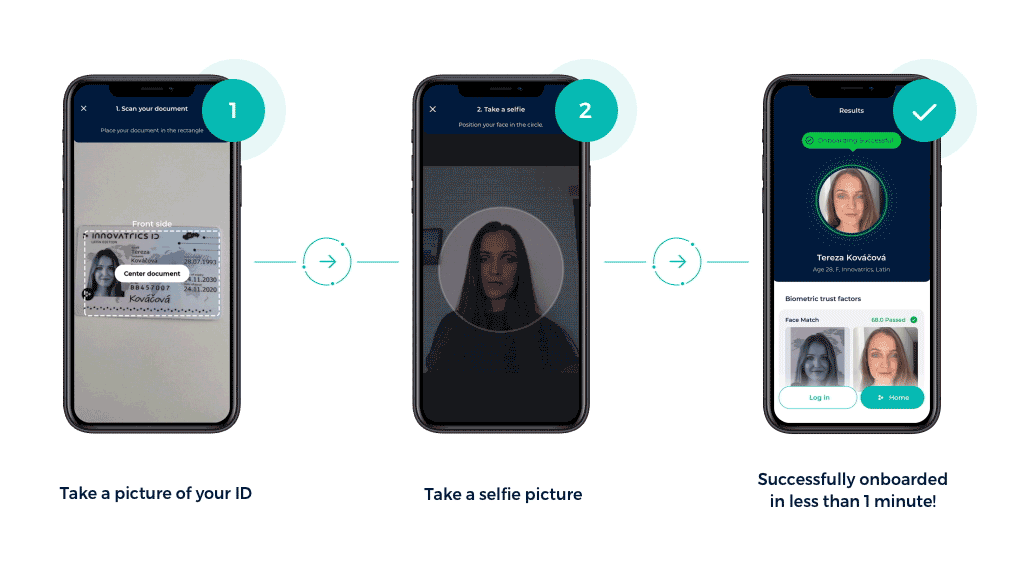
Verification on cloud
DOT has been a great success and has become widely used by companies, institutions, and governments worldwide. Still, even this technology was too big for either small companies or platforms that only needed quick verification steps without a management platform or their own infrastructure. “We responded to the need and created remote identity verification as a service (RIVAS). It’s a cloud solution that runs on our servers and is tailored specifically to small companies and platforms, who only need to sign up and set up an account, to use it for verification of users” explains Bielko.
Ready to build vs. ready to play
For better understanding, let’s illustrate the difference between the Digital Onboarding Toolkit and RIVAS on Lego blocks. DOT is like having a Lego car set delivered to your doorstep. You get very specific and detailed instructions, but it’s up to you to build a Lego car (whether it’s exactly as it was intended, that’s up to you). RIVAS, on the other hand, is like getting a box with a simple Lego car ready to play with.
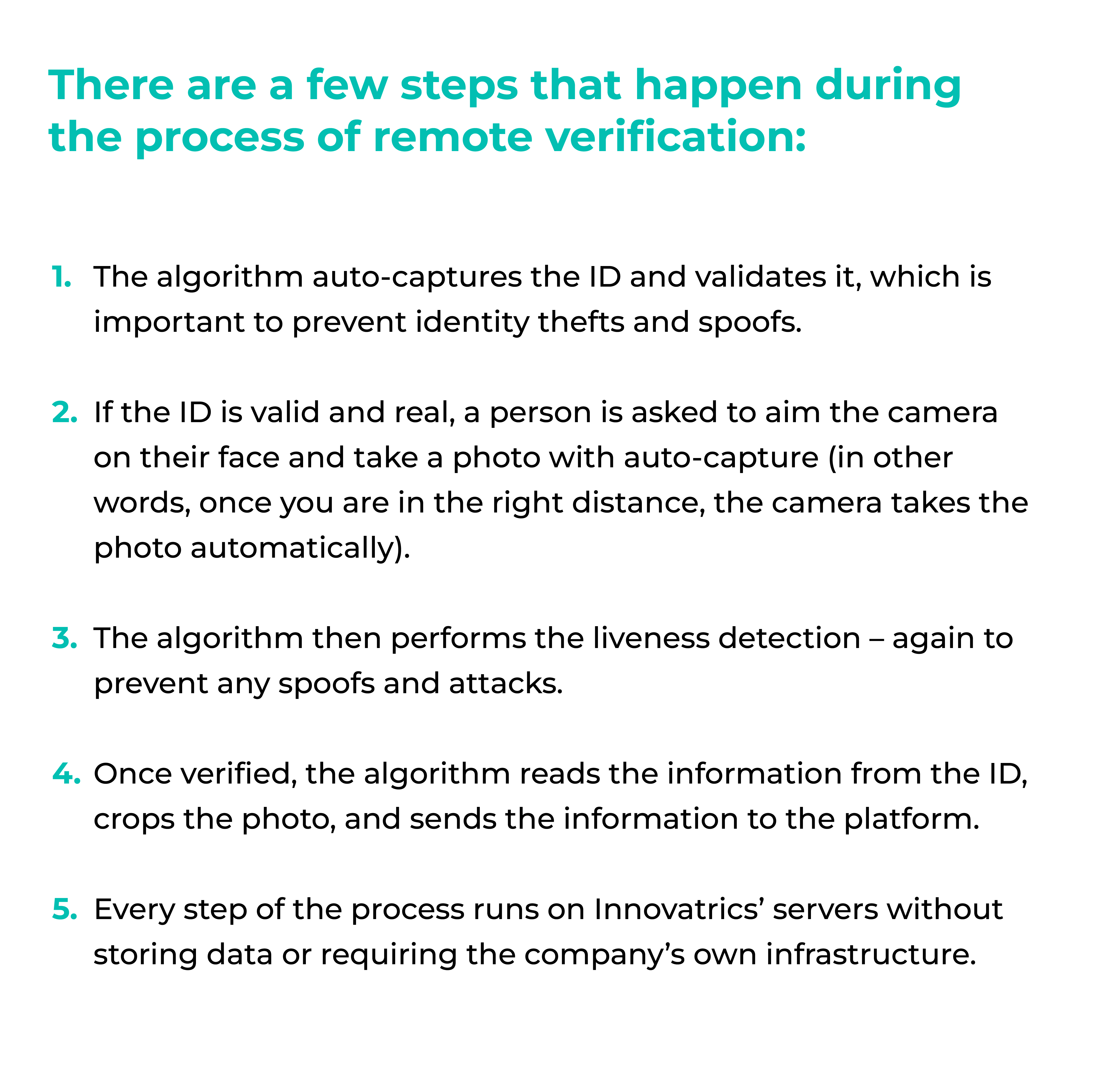
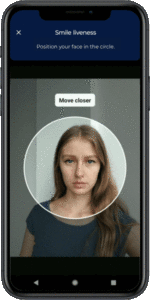
Read more about Liveness
Detection and how it works here.
To explain better how this service works, imagine shopping online. When you’re ready to pay for your items, the site typically redirects you to the payment gateway and prompts you to follow specific steps. After the payment has been completed, you’re redirected back to the original site. With Remote identity verification as a service, the user is also redirected to take a photo of their ID, followed by taking a selfie that would confirm the authenticity of the ID. The software then verifies the identity and, in case of a positive result (the ID and selfie match), collects the information from the ID, sends it back to the platform, and redirects the user back to the site.
When the verification isn’t successful, the user has a few more tries (depending on the platform configuration), and both the user and the platform are notified if the verification fails.
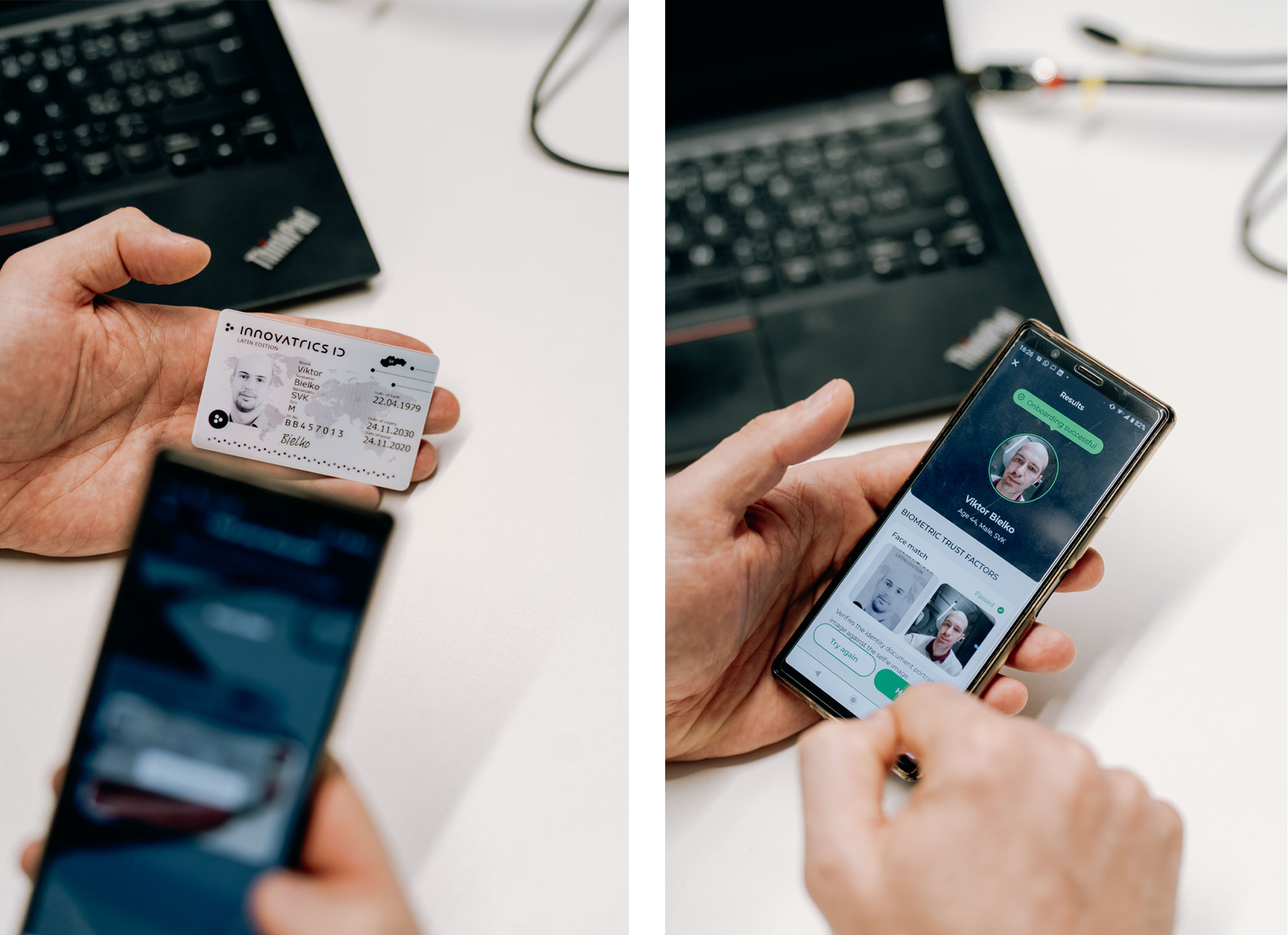
There are only two steps for the user: Take a picture of their ID and then of their face. The user is navigated to do both properly. Because the process is so, it is easy to use across different generations and levels of tech capabilities.
How to create trust in the sharing economy
Identity verification is useful for various companies but is especially effective for sharing economy platforms. The boom these platforms experienced is similar to biometric solutions, closely connected to the pandemic.
Although some of the biggest players in the sharing economy, such as Uber or Airbnb, suffered due to lockdowns and restrictions, many new platforms and shared services emerged. And with that, a need for verification. “Food deliveries is a perfect example. During the pandemic lockdowns, we saw an upsurge in platforms that offer food deliveries. But to hire drivers, platforms needed an easy way to verify them and their IDs,” explains Viktor Bielko.

“It’s a good sign when a platform seeks biometric verification services themselves and not only when it’s mandatory. It shows responsibility and care.”
From 0 to 1
Platforms and companies are fully in charge of just how precise the verification needs to be. The algorithm doesn’t give a yes/no answer about the match. It responds with numbers from 0 to 1. The closer to 1, the higher the probability that the faces are identical. It is always up to the client to set the acceptable threshold.
In Bielko’s words, this also led to another phenomenon – safeguarding the quality. “On sharing economy platforms, five-star reviews from customers are the only assurance of service quality. That’s why companies take every precaution to avoid misuse of accounts.” For example, a global ride-hailing platform has a strict policy that every driver needs to have top reviews. If the rating drops to four stars or less, the driver is risking the deactivation of the account.
Because of this, the company has been tackling account misuse. Drivers with low ratings “borrow” accounts from others to ride or create new fake accounts with fake IDs. Quick verification of documentation and liveness detection can prevent fraud and a decrease in quality.

Five-star reviews that have value
Identity verification is crucial for the majority of sharing economy platforms. “It’s a very good sign when the platforms and companies seek biometric services themselves, and not only when it’s mandatory (e.g., banks, telco providers). It shows responsibility and care and means that those five stars mean something,” claims Innovatrics product manager. He adds that ratings guarantee quality, ultimately determining the success or failure of the platform.
Let’s explore the types of sharing economy platforms that can and should leverage this technology.
- Taxi/ride-sharing companies and food deliveries. To assure the safety of the customers, the identity of couriers of such companies needs to be verified during the onboarding process. (Bolt, Bolt Food, Wolt, Uber)
- Accommodation and home rentals. For these platforms, it’s crucial to use technology to verify the identity of both the hosts and subtenants, as well as collect important information since, in some countries, it’s mandatory to inform tax authorities about rented properties. (Airbnb, HomeAway, FlipKey)
- Babysitters and home nurses. It’s a very sensitive matter to find the right and trustworthy person to care about loved ones, so it’s no wonder everybody who offers such services should be properly verified. Ratings and reviews are also crucial for maintaining the highest level of trust possible. (Domelia.sk, Hlidacky.cz)
- Peer-to-peer money lending. In this case, the need for identity verification goes both ways. Platforms need to verify lenders but also receivers to prevent fraud and also make sure that lenders get their money back. (Zltymelon.sk, Zonky.cz)
- Services and handymen work. The platforms need to validate the identity of people offering services for safety and tax reasons if required by the regulations in the respective country. (Jaspravim.sk, Adam.cz)
Adjustable product
Although Innovatrics offers identity verification during onboarding, some industries have other mandatory steps for every new customer (especially financial institutions). Companies can create their extensions to Innovatrics’ remote identity verification and include other questionnaires, verification of debt, etc.
Better future, thanks to fraudsters
“The verification algorithm will never really be done and finished. The better we get, the more creative fraudsters must be, and because of that, the more we have to improve the algorithm,” explains Bielko.
He adds that the training and precision always depend on the dataset the algorithm is trained on. “We train our algorithm on real attacks and spoof attempts. We use the same and similar techniques for frauds that we see in reality. We use deep fakes, AI, masks, everything we know can be misused, and everything we can think of — and we are creative,” says Bielko.
Innovatrics also perfects the performance of selfie verification algorithms in poor conditions, such as bad lighting. Especially for liveness detection, it’s important to have good selfie quality, particularly lightning.

It’s safe to say that even though COVID-19 was a difficult time for companies and individuals, it was a thriving period for biometrics. Because of the pandemic, the use of biometrics switched from premium clients to the new widespread normal. Thanks to the Digital Onboarding Toolkit from Innovatrics, identity verification became an easy few-step process that allows verification of users and clients across ages, technical skills, and digital experience.
For those who can’t and don’t need to store software in-house, Innovatrics offers Remote identity verification as a service, tailored specifically for companies and platforms that only need quick and easy verification to ensure the safety of users and protect the quality of services.
AUTHOR: Jana Nováková
PHOTO: Dominika Behúlová
Sources
- Inside the War on Fake Consumer Reviews
- Airbnb is cracking down on fake listings. The platform has removed 59,000 so far this year
- Scammers impersonate delivery service support to rip off drivers and restaurants
- Uber’s US Safety Report
- Lyft’s Community Safety Report
- The Dark Side of Delicious: Decoding Food Delivery Fraud on the Dark Web






